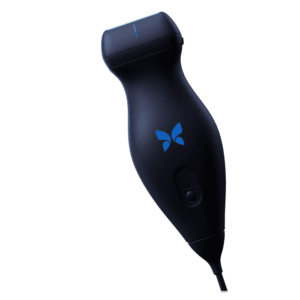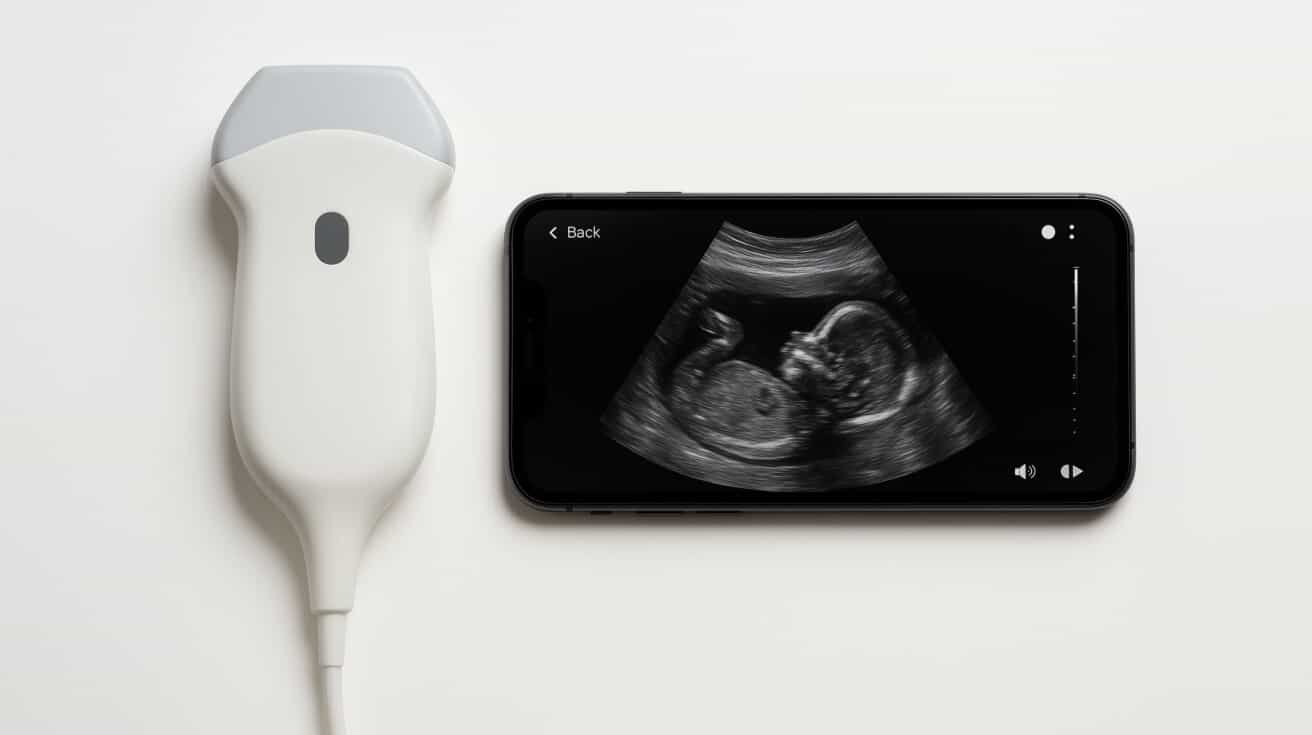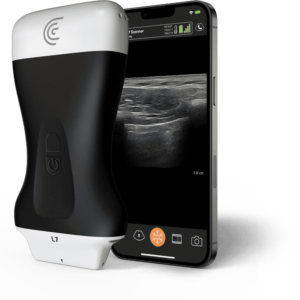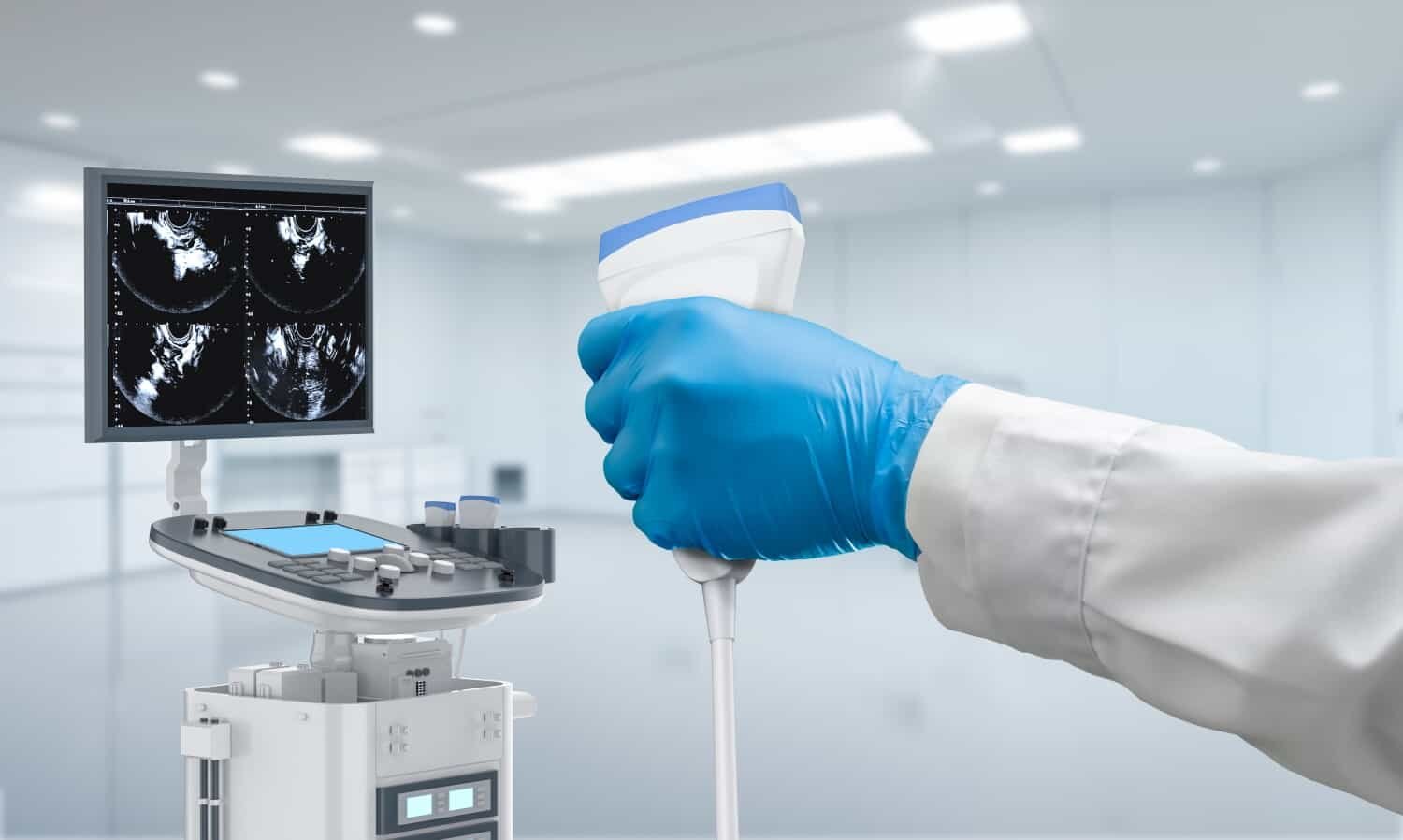A portable ultrasound is more than a purchase – it’s a diagnostic investment. Are you having to have patients wait for the ultrasound machine? Is shared equipment letting you down when you need it the most?
If patients have to wait or come back, it affects both efficiency and their health outcomes. Some patients may not stay or return, especially if they believe their problem is minor. A healthcare provider can bring a portable ultrasound machine to the patient. This will reduce wait times and improve patient outcomes and satisfaction.
Portable ultrasounds are not only for clinics. They are also helpful for labs and research facilities. Teaching facilities and medical schools can also utilize them. These machines can be brought into classrooms for learning.
The next problem, though, is which one to get. There are dozens of models, with different specs and price points. How do you choose the right one?
This guide will break down what experienced users wish they knew when they were buying their first portable ultrasound. It also includes a comparison of the top five machines on the market.
What Exactly is a Portable Ultrasound Machine?
A handheld or compact portable ultrasound machine allows users to move it easily from room to room or site to site. Healthcare providers use it at the point of care, allowing the patient to stay in the same room and saving significant time. They are also helpful for smaller clinics that may not have space for a full-size machine. Portable ultrasound machines are used for a variety of purposes, but typical use cases include:
- Emergency rooms, especially when dealing with patients who can’t walk
- Home healthcare services, including midwives making home visits
- Small clinics need a versatile machine that can handle a variety of patients in a small space
- Military applications
- Sports medicine, allowing for athletes to be checked at the field side, track side, or roadside
Traditional ultrasound machines can be moved. They are usually on a cart. However, they need more space and are often kept in an imaging room.
Some manufacturers equip portable ultrasound machines with wheeled carts for easy transportation. These machines are heavier, but they are still designed to be moved. A third type is laptop-style machines. These have a probe connected to a device that looks like a computer. This device can be placed on a table or desk.
Handheld Ultrasound is beneficial for professionals who make house calls or run mobile clinics. Laptop-style machines are great for moving between treatment rooms.
Another factor to consider is the various types of ultrasound machines. Probe (transducer) type is a key factor here, with some machines having multiple probe types for different purposes. Probe types include:
- Linear. These probes produce high-frequency sound waves and are used to image superficial structures.
Doctors often use them for vascular imaging. Doctors also use them for thyroid and breast exams. They help with musculoskeletal imaging, like after an injury, and scanning smaller body parts.
- Convex or curvilinear. These create low-frequency waves. They are used for obstetric and gynecological exams. They can also image other abdominal organs, such as the kidneys or liver.
- Phased. Doctors use these for very deep penetration, typically for examinations of the brain or heart.
- Endocavitary. This type of probe performs transvaginal ultrasounds for pregnancy evaluation and transrectal ultrasounds for prostate imaging.
- 3D/4D. Doctors use these for three-dimensional and real-time imaging, and they most often employ them for fetal scans.
Top 5 Portable Ultrasound Machines Doctors Are Discussing
Before we dive into the buyer’s checklist, let’s explore the five models that are leading clinics, labs, and research today. We will also see where each one excels.
The type of machine you need depends on your specialty and the demographics of your patients. However, you must still care about quality. At Marcroft, we only carry rigorously tested units that meet clinical-grade performance requirements.
1. GE HealthCare Vscan Air SL
This is a wireless, handheld system designed for rapid, point-of-care assessments. The GE HealthCare Vscan Air SL comes with two transducers – phased and linear, making it ideal for cardiac evaluations. You can use the same device for vascular and cardiac imaging without hesitation. It fits in a large pocket, and instead of having a large laptop-style computer, it pairs with any mobile device.
Pros:
- Lightweight and easy to carry
- Waterproof
- Drop tested to military standards
- Flight and ambulance ready
- User-friendly interface
- Wireless charging
Cons:
- Software subscription required for advanced digital tools
- Expensive for a handheld
- Software may not be available in your country
- Requires a functioning mobile device
- Relatively short battery life
Best for
- Cardiology
2. Ge Vscan Air CL
The Vscan Air CL is a similar device, but instead of having phased and linear transducers, it has curved and linear. This device is designed for practices that require a single, flexible tool.
The linear transducer works well for vascular and musculoskeletal exams. The curved transducer is suitable for abdominal imaging and obstetric checks. Additionally, it is a helpful tool for sports medicine. This is especially true for athletes who might fall and hurt their abdomen.
Like the SL, it fits in your pocket and pairs with almost any mobile device. It also offers excellent image processing and quality for a handheld device.
Pros:
- Lightweight and easy to carry
- Waterproof
- Drop tested to military standards
- User-friendly interface
- Wireless charging
- Auto-delete and encryption to protect patient privacy
Cons:
- Software subscription required for advanced digital tools
- Expensive for a handheld
- Requires a functioning mobile device
- Relatively short battery life
Best for
- Sports medicine
- Obstretics
3. Clarius L7 HD3 Linear Scanner
This is a high-frequency linear probe that operates between 7.5 and 15 MHz. The Clarius L7 HD3 is a specialist unit designed for shallow structures and superficial anatomy. It’s ideal for vascular, small parts, ocular, breast, lung, and musculoskeletal imaging.
Wireless and exceptionally light, it offers outstanding imaging quality and ample cloud storage space. It also makes fairly heavy use of AI.
Pros:
- Very lightweight
- Easy to use
- Comes with a cross body bag that can hold both it and the related Convex scanner as well as the charger and spare batteries
- Waterproof
- Drop tested
Cons:
- Can be a little hard to clean
- Has a bit of a time lag on boot
- Cloud access requires a premium subscription
- Requires a functioning mobile device
Best for
- Vascular clinics
- Breast scans
- Musculoskeletal
- Ocular
4. Butterfly IQ+
The Butterfly IQ+ is designed as an easy-to-use, single-probe, whole-body solution. With over 20 presets, it’s helpful in a wide range of settings, including emergency rooms, obstetrics, and sports medicine. It can perform phased, linear, and curved operations without the need to physically change out transducers.
However, it is now being replaced by the Butterfly IQ3. They are offering good trade-in deals. This might mean it is better to go straight for the IQ3. It has excellent reviews for sideline sports medicine.
The technology is new and different. Instead of quartz crystal transducers, it uses a synthetic chip with 9,000 metal transducers. This means you don’t have to change probes. This does make it slightly heavier.

Pros
- No changing probes. Can do all kinds of scans out of the box
- Excellent app that does some image processing right on your phone
- Affordable price
- Easy to travel with
Cons
- Not wireless. Requires a cable to plug it in to your phone.
- A little heavier than other handhelds
- Requires a functioning mobile device
- Requires an annual subscription
Best for:
- Sports medicine
- Urgent care
5. Mindray TE Air (i3P)
Mindray TE Air is another wireless handheld system, designed primarily for emergency and critical care. It has several presets and scanning modes, including color options.
It is also easy to clean and sterilize. It utilizes a phased array and comes in a protective case that also serves as a portable charger, enabling all-day use. It can connect to some advanced devices in the emergency room and connects well with hospital information systems.
Pros
- The charging case helps ensure the device is always charged and ready to go
- Interacts well with other hospital devices and information systems
- Waterproof
- Drop tested
- Good ergonomics
- Dual cardiac and convex probes
- Optional tissue Doppler imaging
- Specialist features for bladder scanning
Cons:
- Requires an iOS device
- Short battery scan time
- Many essential features, including the charger case, cost extra
Best For
- Hospital emergency rooms
- Urology
Key Factors to Consider Before Buying
Many of these units are not cheap. Purchasing the wrong one for your needs can leave your clinic in a bind, unable to afford the correct tool. Consider exactly what you need before making a purchase and seek expert help if you’re unsure.
Here is a checklist of things to consider:
1. Image quality vs. depth. This is often a tradeoff with small units, including portables.
Do you need high-quality images? Do you need to image deep structures and tissues? Do you need real-time imaging?
2. Probe type compatibility. Does the unit you are looking at have the right probe type or probe types? Some of these units have multiple probes, while other manufacturers focus on doing one transducer per device.
3. Battery life and recharge time. How much will the probe be used on any given day? How fast does it recharge? You can defeat the point of a portable unit altogether if you never charge it when you need it.
4. Portability and weight. Do you need a handheld device or would a laptop-type device work better? Also consider ergonomics, especially in busy clinics, where people may use the device for extended periods.
All of this should be based on your actual use case and needs. Marcroft Medical helps clinics and labs evaluate systems based on workflow – not hype.
Pros and Cons of Portable Ultrasound
Another thing to consider is how much you truly need a portable machine. Consider the advantages and disadvantages of portable ultrasound in general before making your choice.
Pros:
- Ability to perform scans in more places, including outside the clinical setting
- Fewer bottlenecks and shorter wait times for patients
- Comparatively cheap, especially if you already own a tablet or other suitable device
- Easier to use, and thus usable by more staff without specialized training
- No need to leave the bedside to retrieve a machine or move patients
- No need to locate a cart-based ultrasound machine that might be in a random location
Cons:
- With current technology, some advanced techniques still can’t be performed with handheld devices, such as continuous wave Doppler for cardiology.
- Slight reduction in image quality.
- Handhelds often come with annual subscription fees that mount up over time
- Not all portables include a carrying case.
- Portable devices need to be charged. A risk exists that clinicians will forget to charge the device, rendering it useless.
How Different Specialties Use Portable Ultrasound
Clinical specialties use ultrasound in a variety of ways, but what about academia and research? Here are some ways different research specialties might use these devices.
Biomedical Research
Research labs and clinical trials can utilize ultrasound in various ways.
A study of a new cancer drug might use portable ultrasound. It measures tumor size and compares the results of the active group to those of the placebo group.
Portable ultrasound enables healthcare providers to perform this at the point of care, saving time and costs. Alternatively, it may be used to track the reaction to specific drugs. For example, a new anti-inflammatory drug is being tested on athletes. It may need simple muscle scans to check if inflammation is decreasing.
Researchers also sometimes use ultrasound for studies of soft tissue perfusion.
Clinical Labs
Clinical labs may also use these devices.
A clinical lab might use ultrasound to help remove fluid from the abdomen. This method is replacing surgery. It leads to less pain and shorter recovery times for patients. The ease of use of these devices enables lab staff to utilize them effectively.
Other use cases clinical labs might have are vascular scans for access (such as catheters) or emergency abdominal scans. Several methods exist for clinical labs to utilize portable units. These units are beneficial when patient care areas are small or when labs work with other clinics.
Academia
Medical schools also use portable devices extensively. They are helpful for students to practice with. This is especially true for first-year students.
It also applies to students not going into imaging specialties. These students may not need or want formal training in using these tools. First-year students can learn how to perform simple ultrasounds and gain an understanding of what the imaging can and can’t do.
Academia also uses portable devices for case recording. They now have regular access to the cloud and work well with hospital information systems. This allows staff to record cases on-site and then easily replay them for students.
Teaching hospitals can also share these devices between departments. They are easy to move and cheaper than cart-based systems.
How to Evaluate Vendors – Not Just the Machines
Especially since many portable units come with subscription-based features, it is essential to choose a trusted vendor. You might be working with them for years.

Choose reliable vendors that are financially stable. If the subscription features are removed, you may need to purchase a new machine. Other than that, look for the following:
- Availability of experts to help you make the right choice when purchasing your device
- Availability of equipment trials or demos so that you can handle it. This is especially important for handheld devices. You want the design to be comfortable for as many users as possible.
- Real support, readily available, not just email chains, chatbots, or “peer support” networks.
- Stock availability. Can you obtain the necessary machine as soon as possible? In certain circumstances, waiting for the perfect machine may be worthwhile. In others, its your patients who are waiting.
- Honest, up-front pricing. If they offer payment plans, make sure it’s a fair deal. It’s almost always cheaper to buy the device up front.
Ensure that they clearly communicate what is and is not omitted. For example, if the charging case is extra, that should be clear, as should the extra cost.
- Fast replacement. How good is their support if something breaks? If a charger stops charging or the probe itself fails under warranty, it should be repaired or replaced promptly. User reviews can often give you this information.
Marcroft offers all of this and more! We are a family-owned business with over 20 years of experience, so there is little risk of us going out of business.
We test all systems before delivery. We only work with manufacturers we trust. They provide high-quality equipment and stay reliable for us and our clients.
We also provide hands-on support, not just for selection, but for training and troubleshooting as well. We will help your clinical or teaching staff learn the device quickly. We will also provide ongoing support. This is important because subscription-based software can change and update over time.
We test every device and system before delivery. If we find any defects, we will replace it. This reduces your risk of getting a “lemon.”
Understanding Cost vs. Value
One major pitfall is purchasing the most affordable device — or the one that appears to be the most affordable. First of all, a device that doesn’t suit your needs offers poor value – it wastes your money. Secondly, the purchase price is not the only cost you will be facing.
Bear in mind the cost of any software subscription. Also, consider how long the price is locked in for, as it is likely to increase.
Will you need any extra probes or other accessories? You might want, for example, to get a second charger. You might want a bag to hold the device and all of its accessories. These are often an extra cost.
How long do you plan on keeping the device? Do you need or want an extended warranty?
Add up all of the things you need. Some manufacturers will nickel-and-dime you by charging for items you might expect to be included, such as a spare battery.
Also, consider the long-term cost of these things. Sooner or later, for instance, you will need to purchase additional batteries.
How much are replacements? What if the carrying bag wears out before the device? (Another place for checking user reviews).
How much will it cost to train your people? If training is included, it can save a lot of money.
However, remember the indirect cost. Clinical staff in training are unable to perform their jobs. An easier-to-use machine might actually save you money if it means that people can learn to use it faster.
Above all, though, cheap is not good value. If you buy a $2,000 machine that is incredibly cheap, it may have poor image quality. If the manufacturer offers no service, you will ultimately pay more in the long run. Your patients might also pay a higher price.
You’re Not Just Buying a Machine – You’re Choosing a Diagnostic Partner
An ultrasound machine is not just a device. As part of your diagnostic process, it is essential for the accuracy of your research. It also helps improve patient outcomes.
Portable ultrasounds can speed up treatment. They let more people do imaging. They also provide service in unusual places, such as airplanes, football fields, or a patient’s home.
Choosing the right device means asking the right questions. You should work with a supplier who understands your needs and workflow.
At Marcroft Medical, we are not just a vendor. We are your trusted advisor and service partner. Our goal is to ensure you get the right device and the right help for treating your patients.
You might be upgrading your lab. You could be adding a research wing. Or you may be training new medical students.
We can help you pick the right portable ultrasound machine. Contact Marcroft Medical for expert guidance today.











